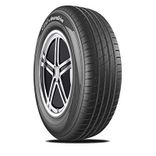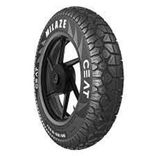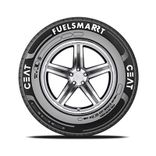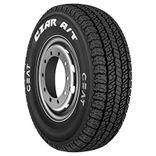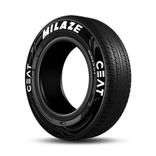Ad
Ad
How to Read Engine Oil Labels: Understanding API, ACEA, and SAE Ratings
Learn how to read your vehicle’s engine oil label and make informed decisions to improve engine health and longevity. This guide explains essential information such as the SAE code, API standards, and manufacturer certifications.
Selecting the appropriate lubricant for your vehicle is critical to its performance and long life. The engine oil label is more than simply a piece of information; it provides important information that can have a direct impact on your engine's health. Do you know how to read it?
Ad
Ad

It may appear confusing at first, but with this guided article, you'll be able to comprehend the label of your engine oil and make informed decisions to provide the best care for your vehicle.
Front Label
the front label of a lubricant container consists of information such as the brand's name, type of the lubricant, and the capacity of the container. This information helps to have a quick overview of oil and whether it suits your engine or not. It also indicates that if the oil is mineral, semi-synthetic, or full-synthetic engine oil.
Understanding SAE Code
The SAE code (Society of Automotive Engineers) identifies the oil's viscosity according to the SAE J300 standard and is critical in knowing how it behaves at different temperatures. The first consideration is whether the oil is monograde or multigrade; that is, whether it is meant to work at a single specified temperature or if it can do so efficiently at a range of temperatures, as is most frequent.
Monograde
In the case of monogrades, the code is followed by a number that denotes the viscosimetric grade, the temperature at which they may perform ideally, and, in some circumstances, the letter W, which stands for Winter. SAE 5W oil can operate at -30ºC due to its high fluidity, allowing for safe engine start-up. Higher figures, such as SAE 20W, have higher viscosity and are meant to work at higher temperatures, starting at -15ºC.
Multigrade
The SAE codes of multigrades consist of two digits separated by a letter W. The first number represents the viscosimetric grade which is the lowest temperature it can work at. The second number on the other hand gives the viscosimetric grade at 100 degrees Celcius.
Back Label
The back label of an engine oil container includes important details such as:
API Standards
The "API donut" on the back label denotes the oil's quality according to American Petroleum Institute (API) standards. This sign surrounds the SAE code and contains additional information. It includes two letters, first for engine type i.e. S for petrol and C for diesel engine use. While the second letter indicates the vehicle generation for which it is made.
The letter N and afterward letters are used in alphabetical order on the engine oil label for current generation engines (made after 2011), whereas J to N is used for quality (vehicles manufactured between 1996 and 2011). Ranges A to E and F to H indicate outdated lubricants, while the former is also regarded as potentially dangerous because it was developed for vehicles from 1930 to 1978.
ACEA Norms and Other Certs
ACEA stands for Association des Constructeurs Européens d'Automobiles which means European Automobile Manufacturers' Association in English. It provides another type of certification for lubricant products.
Similar to the SAE code, it also has a letter that identifies the type of engine it is made for such as A for petrol, B for diesel, and C for engines used in exhaust gas treatment systems.
After this letter, there is a number that identifies the quality of the oil. For instance, ACEA A3, ACEA A4, ACEA B3, or ACEA B4, etc. The higher the number the good will be the oil quality for both petrol and diesel engines respectively.
Manufacturer Approvals
The manufacturer's approvals are also listed on the back label, certifying that the oil has been tested and certified for usage in specific vehicles or conditions of use.
Other Relevant Details
The back side label also contains other relevant information about the product such as:
Safety Data Sheet
Highlighting important information about the product handling and storage which includes toxicity and flammability.
QR Code
You can access the technical data sheet of the product by scanning this code.
Manufacturer Details
Along with the primary details about the manufacturer, it includes contacts for personal and environmental assistance which can be used when any accident occurs with the product.
Recycling Symbols
They highlight that the packaging is made of recycled plastic, which is recyclable, and that the waste oil is collected to prevent pollution and environmental damage.
Bar Codes
The basic purpose of the bar code is to identify the company and the country. It is important for adding the price of each container into purchase collecting systems in businesses.
CarBike360 Says
Knowing the particulars and details mentioned on the label of the engine oil container is very important for your engine’s health and longevity. Understanding important standards, certifications, and ratings like API, ACEA, and SAE helps in making informed decisions while choosing the best product for your engine.
Also Read: Clutch Fluid vs. Brake Fluid: Are They the Same?
More Articles

Meet the Hero Vida V1: Sleek, Smart, and Sustainable
The Hero Vida V1 electric scooter offers sleek design, innovative technology, and impressive performance. Learn about its features, variants, pricing, and competition in India’s growing electric vehicle market.
20-Feb-2025 12:01 PM
Read Full Article
Meet the Hero Vida V1: Sleek, Smart, and Sustainable
The Hero Vida V1 electric scooter offers sleek design, innovative technology, and impressive performance. Learn about its features, variants, pricing, and competition in India’s growing electric vehicle market.
20-Feb-2025 12:01 PM
Read Full Article
Brake Fluid Types Explained: DOT 3, DOT 4, DOT 5 – Which One to Use?
This article explains the different types of brake fluids (DOT 3, DOT 4, DOT 5, DOT 5.1) and which one to use in your vehicle.
13-Feb-2025 01:12 PM
Read Full Article
Brake Fluid Types Explained: DOT 3, DOT 4, DOT 5 – Which One to Use?
This article explains the different types of brake fluids (DOT 3, DOT 4, DOT 5, DOT 5.1) and which one to use in your vehicle.
13-Feb-2025 01:12 PM
Read Full Article
Do Engine Oil Additives Really Improve Your Vehicle's Performance?
This article provides an in-depth overview of engine oil additives, explaining what they are, how they function, and whether they’re worth using in your vehicle.
12-Feb-2025 11:14 AM
Read Full Article
Do Engine Oil Additives Really Improve Your Vehicle's Performance?
This article provides an in-depth overview of engine oil additives, explaining what they are, how they function, and whether they’re worth using in your vehicle.
12-Feb-2025 11:14 AM
Read Full Article
How to Choose the Right Lubricants for Your Car, Bike, and Scooter
Learn how to choose the right lubricants for your vehicle, whether it’s a car, bike, or scooter. This guide covers essential factors such as engine oil, transmission fluids, and maintenance tips to ensure optimal performance and longevity.
12-Feb-2025 05:57 AM
Read Full Article
How to Choose the Right Lubricants for Your Car, Bike, and Scooter
Learn how to choose the right lubricants for your vehicle, whether it’s a car, bike, or scooter. This guide covers essential factors such as engine oil, transmission fluids, and maintenance tips to ensure optimal performance and longevity.
12-Feb-2025 05:57 AM
Read Full Article
Impact of Poor Lubrication on Your Vehicle’s Performance and Longevity
Lubrication is key to your vehicle’s performance and longevity. This article covers the effects of poor lubrication, its causes, and tips to prevent it, ensuring your vehicle runs smoothly and lasts longer.
10-Feb-2025 07:32 AM
Read Full Article
Impact of Poor Lubrication on Your Vehicle’s Performance and Longevity
Lubrication is key to your vehicle’s performance and longevity. This article covers the effects of poor lubrication, its causes, and tips to prevent it, ensuring your vehicle runs smoothly and lasts longer.
10-Feb-2025 07:32 AM
Read Full Article
Clutch Fluid vs. Brake Fluid: Are They the Same?
Brake and clutch fluids are crucial for the performance and safety of your vehicle. This article explains their functions, maintenance tips, and when to know it's time to inspect or replace these fluids.
05-Feb-2025 12:19 PM
Read Full Article
Clutch Fluid vs. Brake Fluid: Are They the Same?
Brake and clutch fluids are crucial for the performance and safety of your vehicle. This article explains their functions, maintenance tips, and when to know it's time to inspect or replace these fluids.
05-Feb-2025 12:19 PM
Read Full ArticleAd
Ad






